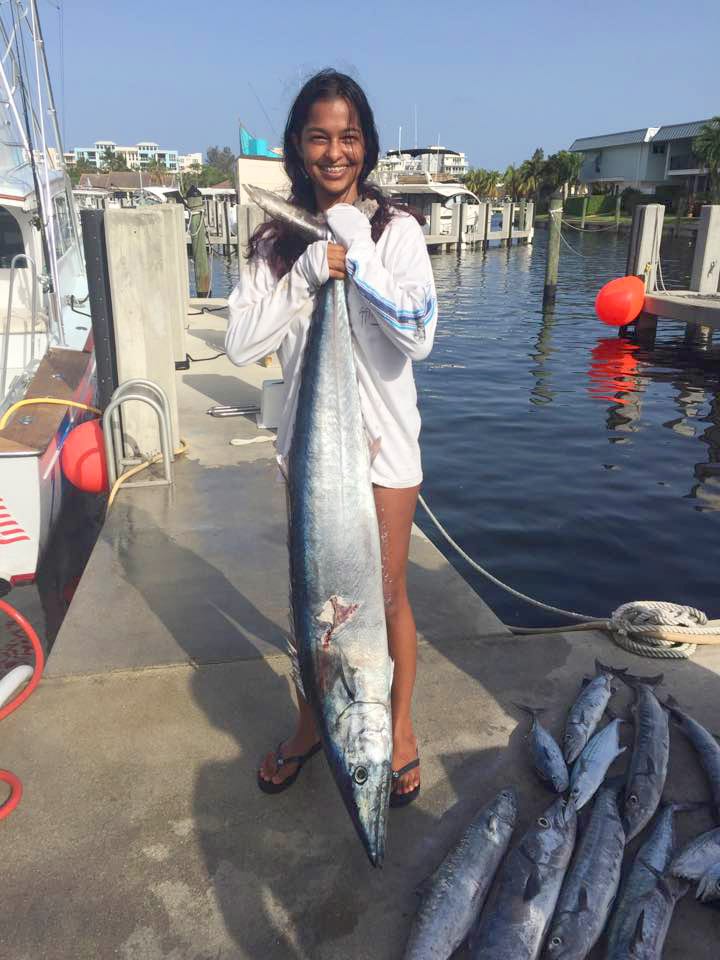by Bill Buckley, Contributing Writer
November brings (hopefully) a relief from the high temperatures and humidity we’ve had lately. And with that, cooler water. The mullet migrations were in full force in October and should bleed into this month as well. There should also be good numbers of other baitfish near the inlets and beaches like pilchards, threadfins, and blue runners.

Snook, small tarpon, pompano, and jacks are all expected to be biting well on both live baits and lures. Although more prevalent north of Lake Worth, some redfish and black drum can also be caught along the beaches in our area. Use small live fish, shrimp, or crabs cast beyond the surf zone with a couple ounces of lead and a 3-5ft fluorocarbon leader. Using live or cut shrimp and smaller hooks can also produce pompano while you’re targeting redfish.
Wahoo are definitely here now. There have been many 20-30lb fish caught in the past month, and reports of some beasts over 60lbs being lost just outside of gaff range. The wahoo bite should remain good throughout the cooler months. Trolling bonito strips, split-tail mullet, and Ilander-skirted horse ballyhoo behind planers and cigar weights at 7-10kts in 100-250ft depths is your best bet, without the tackle expense of high-speed trolling. When you do get a screamer, always keep your boat moving forward to keep tension on the fish. Wahoo are most likely to shake their heads and throw hooks near the boat when you’ve slowed down, so try to keep moving at a good pace and gently ease the fish into gaff range. If your boat has a low transom door, try the more advanced technique of leadering the wahoo straight into the boat without gaffing. Beware of the teeth!
What else can you expect in the cooler months? Sailfish, of course! Many pages can be written about how to catch sailfish, but I’ll just skim the basics. By far, the best technique is kite fishing with live goggle eyes, which does require a moderate investment in tackle, accessories, and bait. For the more budget-restricted anglers: Catch blue runners in the morning by slow trolling in the shallows near inlets and patch reefs with large Sabikis intended for goggle eyes. Attach a 1oz bucktail jig at the end instead of a lead weight. Drift the runners in 80-275ft of water with a combination of flat lines and weighted lines. You may need to use a small balloon to keep your shallow baits near the surface on light wind days. Wire leaders are not recommended for targeting sailfish, but if your baits are getting cut off, incorporate an 8-inch piece of wire between the leader and hook to catch that pesky kingfish or wahoo that’s stealing your baits. Sailfish can also be caught while trolling ballyhoo, but the hook-up ratio is low unless you are standing-by ready to “feed” the sail before setting the hook.
Bill Buckley “Uncle Buck”
Graphic artist & offshore angler, Boca Raton, FL